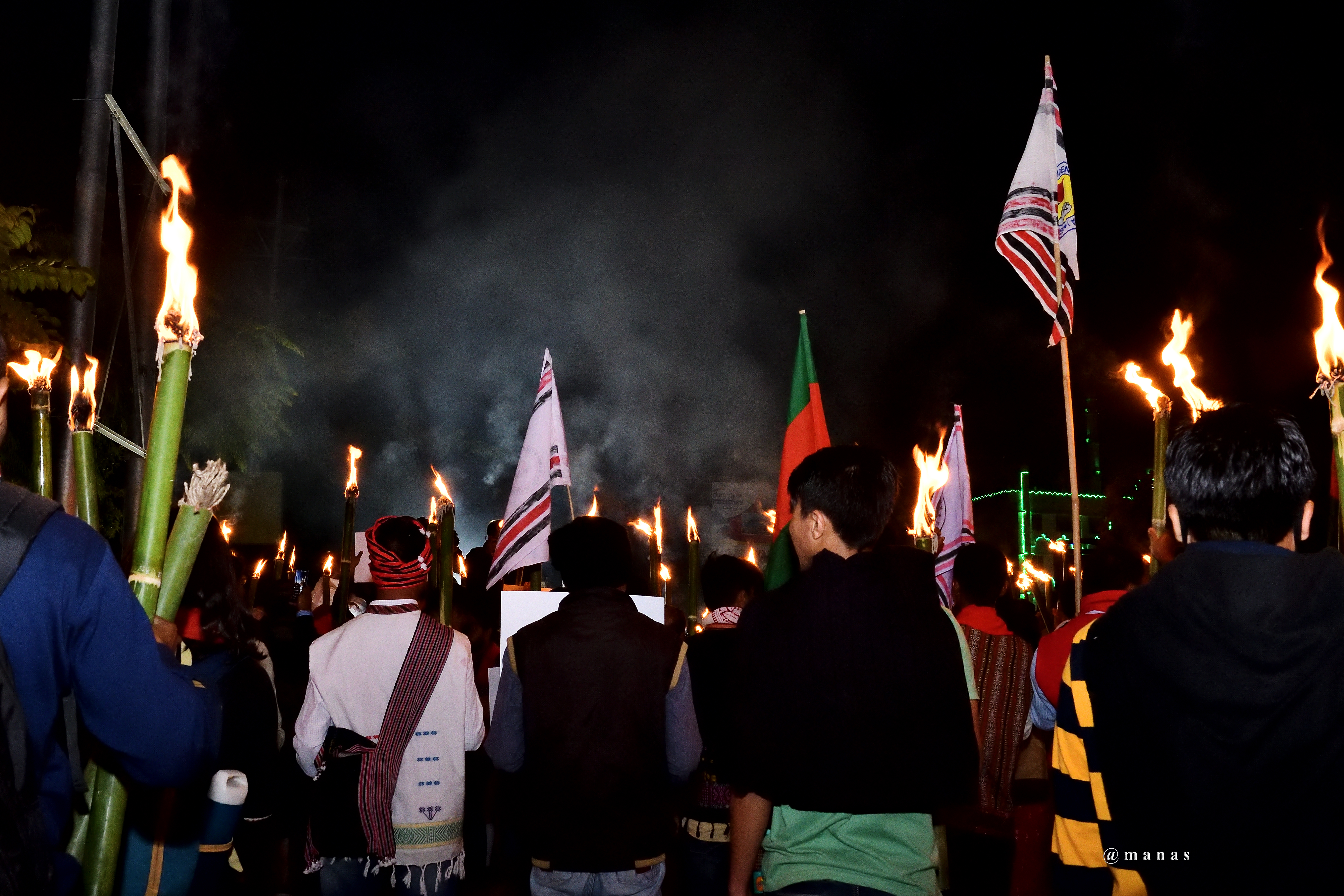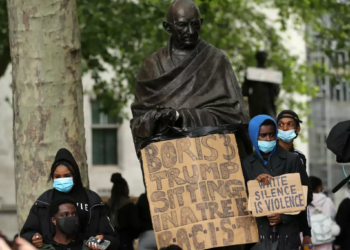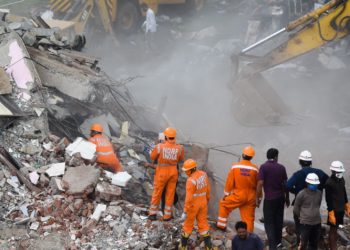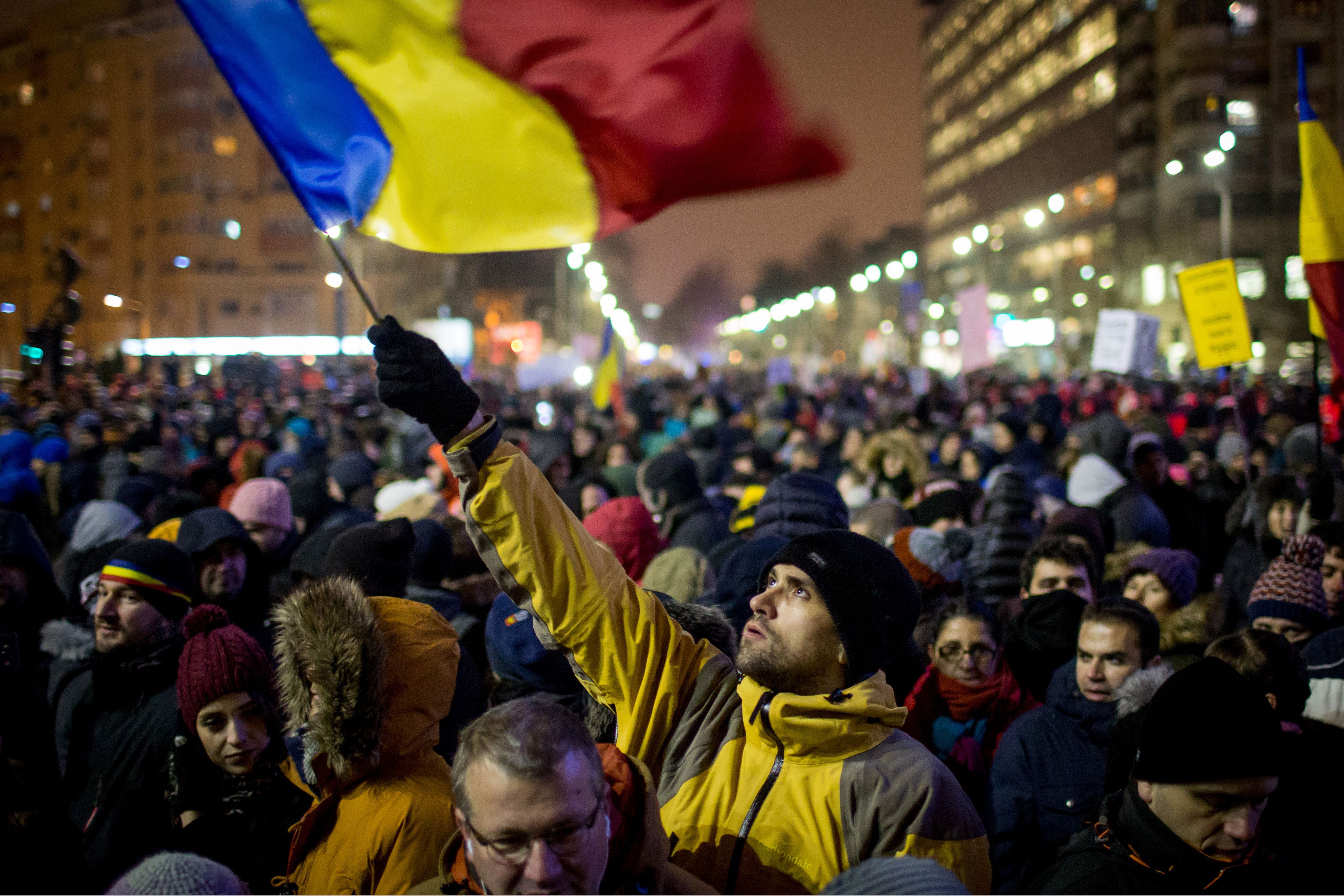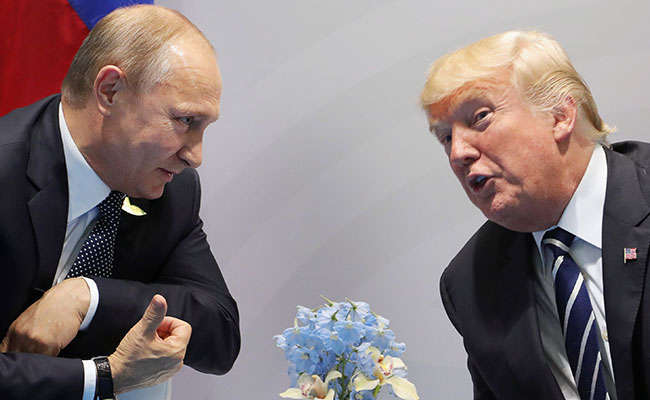India’s government recently enacted the contentious Citizenship Amendment Act (CAA) that provides fast-tracked citizenship to specific religious communities from select neighboring countries. Many Indians consider this against the country’s secular ethos and are protesting. The world is watching as reports surface about repressive measures authorities are adopting against the demonstrators.
Some accounts mention that the rallies started in the northeastern state of Assam. However, these reports fail to detail that Assam’s protests began a week before the CAA became law and for entirely different reasons.
These reasons shaped India’s northeastern periphery – where Assam is located – as one of the most sustained conflict zones of postcolonial South Asia. They also highlight the differences between the Northeast and the rest of India. These differences align the region’s struggles with those of marginalized and conflict-ravaged communities around the world.
Situating the Northeast in India
For most people, Assam is just a name on their tea. For people on India’s mainland, Assam, along with its seven sister states, is a peripheral part of the Indian territory that is tenuously connected through a 13-mile wide land corridor. Rarely has it been integral to the Indian political or popular imaginations.
Colonized by the British a century after the mainland, the Northeast joined India’s anti-colonial struggle and, in 1947, accepted the Indian Constitution. Before colonial and postcolonial politics shaped the Northeast as India’s last frontier, it was a major global migration route.

As the meeting place of South, Southeast, and East Asia, it is peopled by hundreds of small indigenous, autochthonous, and settler communities. These communities have ethnic kin in the three Asia’s but developed distinctive syncretic identities over centuries of co-existence. This distinctiveness often made their desire to belong to the postcolonial Indian nation-state suspect.
The region’s continued militarization and imposition of laws that disregard human rights, such as the 1958 Armed Forces Special Powers Act, indicate a political ideology that treats peripheral – mostly indigenous – populations as savages who need to be tamed by force. That six people, including two teenagers, were killed by Indian armed forces within two weeks of the protests starting in Assam confirms this.
Mainland’s Perception of the Northeast
The popular imagination on the mainland, in contrast, moves between exoticizing and ostracizing the Northeasterners with their polyphonic and multi-ethnic identities. Myths about a remote magical land that captivates outside visitors thrive alongside racial attacks and murders of Northeast people on the mainland.
The larger, more cohesive communities of India’s heartland are unable to accept the distinctiveness of the small, transregional populations whose identities are characterized by fluidity and multiplicity.
That protests against an act that violates the secular character of the Indian Constitution should begin in Assam, at the heart of this “other” India, attests to the ability of the socially and politically marginalized everywhere to identify and challenge asymmetry of power.
Survival and Self-Determination
The central concern in Assam and the Northeast, however, is not religious secularism. The struggle is for survival and self-determination. As a borderland sharing porous boundaries with Myanmar, Bhutan, Bangladesh, Nepal, and China, the region provided sanctuary to millions of migrants since the Partition of India in 1947.
This overwhelmed the small populations, endangering their ways of life and overstretching their resources. In Tripura, the Northeastern Indian state bordering Bangladesh on three sides, indigenous people lost their language and identity to migrants.
Assam is among India’s five poorest states, and its people are unwilling to share their limited resources with more migrants. Following the 1979 – 1985 Assam Movement, a civil disobedience campaign against illegal (mostly Bangladeshi) immigrants, the Indian government signed an accord assuring Assam would not have to host migrants who came in after the 1971 formation of Bangladesh. The CAA violates this accord.
A flawed document, the language and implementation of the Assam Accord created more problems than it solved. It led to violent conflicts between Assam’s dominant autochthonous Axamiya community and the smaller indigenous groups. It also revived the process of updating the 1951 National Citizen’s Register (NRC) that has made vulnerable sections of the people stateless – irrespective of ethnicity and nationality – and condemn them to detention centers.
The NRC, though, was considered a necessity in Assam given the overwhelming fear of the outsider fueled by the absence of clear policies addressing continued undocumented migration. Successive governments have played on this fear to keep Assam in turmoil. A rhetoric of violence has developed around the figure of the “illegal Muslim Bangladeshi,” the most visible “other.” Depending on the occasion and intent, the number of these “invaders” “infiltrating” into Assam ranged from negligible to thousands a day.
Examined closely, the “Bangladeshi” for the people of Assam personifies the fear that small borderland communities globally have of being swamped and displaced from their land.
Migrants from Bangladesh, when it still was East Bengal (until 1947), were encouraged to settle in Assam to make up for population losses from epidemics and earthquakes. They were also welcomed as the neo-Axamiya in the literature and music of Assam. But as pressures on land and resources increased, hosting large numbers of migrants from neighboring countries – and mainland India – became untenable.
The demand to settle migrants in other parts of India was made in 1979 as it is being made today. But like previous governments, once voted to power, the current government also broke its promise to address the fear and, instead, passed the CAA.
Peace After a Violent History
The Indian State has effectively controlled its border populations by playing on this deep-rooted fear and has co-opted the ethnic elites to keep inter-ethnic conflicts alive. The CAA, too, attempted the politics of divide and rule, isolating autochthonous and settler communities from the indigenous. It did this by proposing to keep protected indigenous lands out of the purview of the act.
But throughout its “postcolonial” career, the Northeast experienced troubles fostered by the politics of ethnic fragmentation. Only in the past decade, the periphery was slowly emerging from its violent history of armed insurgencies, extra-legal killings, and ethnic cleansings.
The torchbearers!
Protests against #CAA at #Sonitpur #Assam pic.twitter.com/J9uuFAVbjy
— Anupam Bordoloi (@asomputra) January 11, 2020
The CAA protests demonstrate the desire for peace in the region; finally, the region is learning the power of standing together rather than standing against or above. Only the marginalized know and appreciate this power. Thus, the people of Assam’s sister states are opposing the act, although their respective governments are not. If it is Assam today, they realize, it will be us tomorrow.
This desire for peace, of course, has the specter of violence looming over it. On the one hand are powerful images of CAA protesters on the streets singing songs to voice their anger and lighting earthen lamps for peace. Parallelly, though, there are reports of vandalism; at a few places, settler communities were targeted.
The artists, activists, and professionals who joined forces in this spontaneous and leaderless social movement are vigilant about efforts to derail it towards violence – a strong possibility since conflict-ravaged militarized societies are also criminalized, and Assam is no exception. Mainland Indians, therefore, have been quick to dismiss the legitimacy of Assam’s struggle, labeling the people ethnocentric, xenophobic, even anti-Muslim.
Solidarity and Sisterhood
This is Assam’s struggle, however, to maintain the fragile peace of the recent years by making amends for the mistakes of the Assam Movement that turned violent in certain places, at certain times. In 1983, thousands of settler Muslims were killed. This inspired Islamophobic forces from the mainland to penetrate deeper into the region. Co-opted by these forces, Assam’s dominant communities moved closer to the majoritarian ideology currently prevailing over the mainland.
Now is the time for them to remember that in Assam, institutionalized religions, indigenous faiths, and esoteric practices inform each other. Thus, Hindus in Assam revere Muslim holy men, worship sacred trees, and celebrate the earth’s fertility equally. The languages and cultures of all communities living in Assam also borrow from and lend themselves to each other.
At this crucial historical and political juncture, the people of Assam need to recall the syncretic nature of their ethnic and religious identities with self-pride. This will help them to counter the fear of being overwhelmed because this fear makes them vulnerable. It also puts at risk the sisterhood in the periphery as a whole: this new-found solidarity holds out lessons for all marginalized peoples of the world.
Disclaimer: The views and opinions expressed here are those of the author and do not necessarily reflect the editorial position of The Globe Post.

